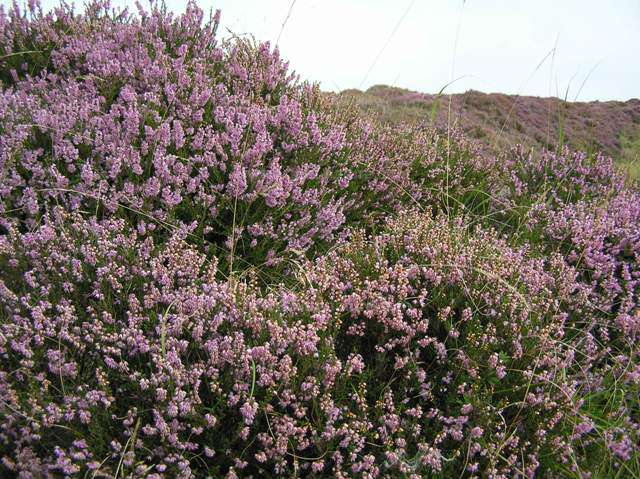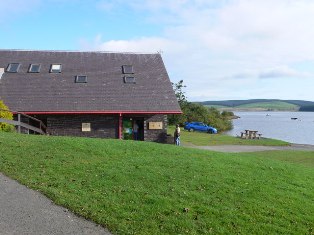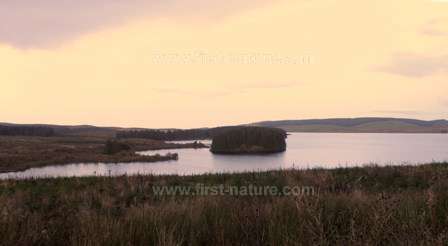Hafod Elwy Moor National Nature Reserve, Nr. Betws-y-Coed, North Wales
Designations: part of Mynydd Hiraethog SSSI
Below: Heather moorland in high summer

Lying between Llyn (Lake) Brenig and Llyn Alwen, this upland NNR consists of a large expanse of heather moorland.
The terrain is a mixture of heathland with plants such as Bilberry and Common Heather that are typical of well-drained acid soil, and some wetter parts that support plants and associated wildlife species more typical of acid bogs.
The reserve is managed by Natural Resources Wales (NRW).
Directions
Grid Ref: SH948564
The best place to park for access to Hafod Elwy Moor is at Llyn Brenig Visitor Centre. From Betws-y-Coed take the main A5 in the direction of Corwen. Once past Pentrefoelas look out for a left turn onto the B4501 to Cerrigydrudion. Continue on the B4501 until you see a turn on the right-hand side of the road signed to the Visitor Centre at Llyn Brenig, which is down a single track lane with passing places.
Facilities
There are no facilities on the NNR itself, but there are public toilets and a café in the Brenig Visitor Centre, which is right beside Llyn Brenig.
Below: The Brenig Visitor Centre © Copyright Eirian Evans and licensed for reuse under this Creative Commons Licence

Access
The open moorland is a difficult and treacherous area for walking, and in the summer visitors need to be careful not to disturb ground-nesting birds. A bridleway traverses the NNR, and walking along it is the best way to get out and experience the moor in safety.
Dogs must be kept on leads at all times.
There are facilities for disabled people at Brenig Visitor Centre, but the nature reserve is not a suitable place for wheelchair users or for prams or pushchairs.
Description of Site
Large expanses of open moorland are vital habitats for many of our birds, and, like much of Snowdonia, Hafod Elwy Moor has its fair share. Resident birds on the NNR include Merlins (Falco columbarius) which, because they require vast open spaces, are now rare and indeed by far the rarest of the birds that live in this rugged and wild place. Merlins share the territory with Peregrine Falcons (Falco peregrinus), Hen Harriers (Circus cyaneus) and Kestrels (Falco tinnunculus), all of which prey on the many smaller birds that also make their homes on the moors.
Below: Llyn Brenig at sunset

You may be lucky and see Black Grouse (Tetrao tetrix) at Hafod Elwy, because in recent years a project has been run there to try to enhance the population of this increasingly rare moorland bird.
The reserve's summer visitors start to arrive in March, and the Northern Wheatear (Oenanthe oenanthe) which nests in the open grasslands in holes is one of them. Look out for them as they sit on exposed rocks while surveying the area during their hunting trips.
Typical plants at Hafod Elwy include Bell Heather (Erica cinerea), Cross-leaved Heath (Erica tetralix), Bilberry (Vaccinium myrtillus), Harebells (Campanula vulgaris) and, in the wetter areas, Hare's-tail Cottongrass (Eriophorum vaginatum), Sundew (Drosera rotundifolia) and Butterwort (Pinguicula vulgaris).
Cross-leaved Heath (Erica tetralix) is the food plant for the Large Heath Butterfly, so do keep a look out for these rare insects when the landscape turns pink with those lovely heathland flowers.